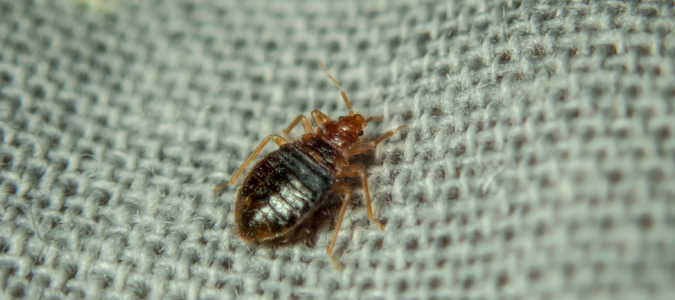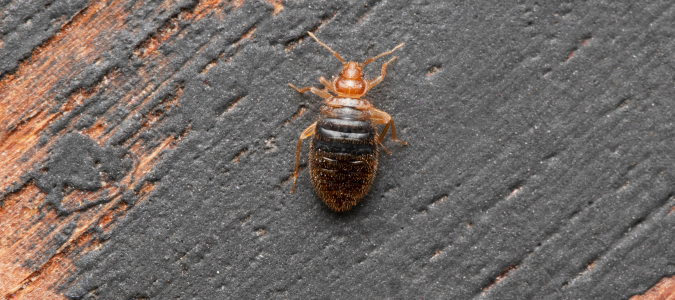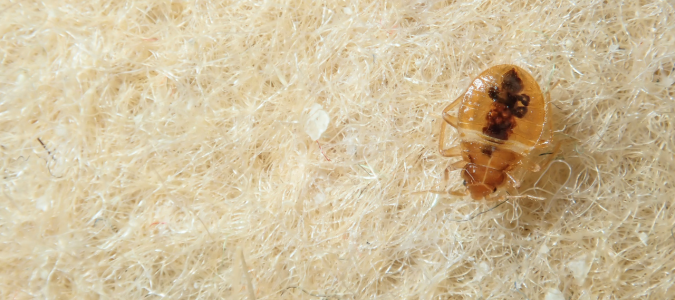Homeowners may confuse mites and bed bugs, pictured above, for each other. However, they are entirely unrelated species, each requiring different treatment methods. It’s crucial to know which one is infesting your home if you want to get things under control.
There are some ways to try to tell these two pests apart. You can also let pest control specialists come over and identify the intruders in your home. They will assess the situation and provide the best solution to manage the mite or bed bug infestation. That way, you and your family can relax at home and get undisturbed sleep again.
Mites Versus Bed Bugs: Appearance and Habits
Bed bugs are flat and small parasitic insects that depend on human and animal blood for their nutrition. They feed when their victims are asleep and usually hang out near sleeping areas. Meanwhile, mites are arthropods closely related to ticks. They come in many variations, with dust mites being one of the most common. Instead of blood, they like to feast on our dead skin cells.
Appearance
Many homeowners wonder about the size of bed bugs. The average adult bed bug is around a quarter of an inch long and reddish-brown in hue. Their bodies are similar in thickness to credit cards. The bugs are flat enough to squeeze through tiny cracks, although they balloon after feeding and become football-shaped.
Bed bug nymphs are even smaller, ranging from the size of a pinhead to a sesame seed. If they haven’t had a blood meal in a few days, they are often translucent yellowish-tan and can be hard to spot around your home. Once they get a blood meal, they turn bright red once they are full.
While bed bugs are small, dust mites are even smaller, making them hard to see without magnification. They are only a quarter to a third of a millimeter long and look incredibly small under a microscope. Mites’ bodies have two sections, although they’re hard to distinguish. Mite nymphs have three pairs of legs but grow another pair as they transition into adults.
Because mites are hard to see with the naked eye, you’ll need the help of a professional to confirm their presence in your home. A pest control specialist can also identify what type of mites you’re dealing with.
Habits
You usually won’t often find bed bugs out in the open during the day. They hide when the sun’s out, most commonly on mattress seams, bed frames or box springs. Any object around your bed is a possible hideout for these pests. They typically become active at night, biting sleeping humans and sucking their blood. They can travel as much as 100 feet in one night but usually live within 8 feet of the bed.
The cleanliness of a home has nothing to do with these pests. They’re not attracted to dirt or messes, so you can have a pristine home and still have bed bugs. So, how do they get inside our homes? We can unknowingly transport them when we travel, carrying them in our backpacks, suitcases and folded clothes. It’s also possible to bring them home when purchasing secondhand items.
Mites’ habits differ. For example, dust mites feed on the dry skin cells that fall off our bodies. Meanwhile, plant mites feed on our beloved indoor and outdoor plants. Severe infestations can leave plants looking yellow or even kill them.
Biting mites are another variation you might find at home. Their primary hosts are birds and rodents, but they might turn to humans and our pets if their host dies. While they might bite and feed on us, they can’t reproduce without their primary host.
Infestation Signs
The most telling sign of a bed bug infestation is bite marks on your legs, arms and other body parts that may be exposed at night. However, bite marks don’t usually appear until several days after the bite. When these pests bite, they inject an anticoagulant and anesthetic, delaying our skin’s reaction. Look for other clues that can confirm you have an infestation at home, including the following:
- Live bed bugs on the mattress, sheets and other areas
- Bed bug exoskeletons after molting
- Black fecal resembling marker stains on the mattress, bed frame and other areas
- Rust-colored blood stains on the bed, furniture and other areas
- Small, translucent, bean-shaped eggs on and around the bed and other areas
- A musty odor wafting around your home
Because of their small size, all mite variations are hard to detect inside the home. The naked eye isn’t sharp enough to spot these pests, let alone their droppings. But a possible indication of a dust mite infestation is allergic reactions. Mites could be the culprit if you’re experiencing a rash or having an asthma attack.
Bed bugs and mites are not fun to have at home. While they’re generally harmless, they disturb our peace and cause unnecessary stress. Contact a pest control specialist to help you manage the infestation on your property.
Are Bed Bugs Visible to the Naked Eye?
Bed bugs are small pests, but they are visible to the naked eye. Adult bed bugs are approximately the size of an apple seed, so you can easily spot them crawling around your home.
These pests are reddish-brown, wingless and look like a flat disc before a blood meal. But they can sport a completely different look when they are full. They balloon up and take on a more elongated shape. They also become bright red, making them easier to notice.
However, bed bug nymphs are often too small for people to see, and their translucent nature doesn’t help. However, you might spot them after a feeding because they are plumper and turn bright red. Bed bug eggs are also hard to catch, as they are pearl-white and about the size of a pinhead.
Bed bugs don’t just magically appear on our beds. We unknowingly bring them back home when we travel to infected areas. These small stow-aways hide in our luggage, clothes and anywhere else they can hitch a ride. Here are some tips to ensure you don’t bring these pests home from your travels:
- Use hard case luggage if possible because bed bugs find it harder to attach to smooth surfaces.
- Place your clothes and other belongings in resealable plastic bags.
- When you arrive at your accommodation, place your luggage on a hard and elevated surface. Do not put it near the bed or on upholstered furniture.
- Vacuum the nooks and crannies of your luggage and wash your clothes immediately.
What To Know About Brown Bed Bugs
Homeowners can identify adult bed bugs by their reddish-brown color. However, these insects can look more brown than red when they haven’t had a blood meal. They are harder to distinguish from other insects when they are brown.
Baby cockroaches are an example of a bed bug look-alike. They have a flat, oval body and long antennae and legs. And because they’re still nymphs, they don’t have wings yet, making them look even more like bed bugs. The carpet beetle is another insect that shares many physical similarities with bed bugs. They are oval as well, although their length varies per species.
A bed bug infestation can leave homeowners itchy, sleepless and stressed. These pests are hard to control because of their fast reproduction rate. It doesn’t help that they are very small and have excellent hiding skills. If bed bugs or other insects are testing your patience, let a pest control specialist take over. They know how to manage these pests at every stage of their cycle and can show you how to inspect for bed bugs.
Let a Pro Handle Your Bed Bug or Mite Problem
Mites versus bed bugs—which is worse to have at home? Neither pest is pleasant to deal with as they can leave unpleasant welts on your skin and disrupt your beauty sleep. But you don’t have to stress because a pest control specialist has the expertise to control bed bugs and mites.
ABC Can Bring Your Whole Family Relief From Bed Bugs
Homeowners who have a bed bug problem agree that it can significantly alter your normal routine and have a negative impact on your mental health. Take your back life from these pests by contacting ABC Home & Commercial Services. We offer pest control solutions to all types of pest problems, so you can get some relief. Our pros can also give you tips on how to check your bed for bed bugs.



